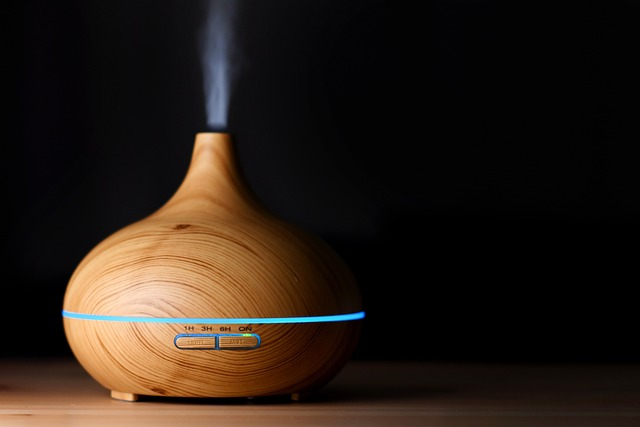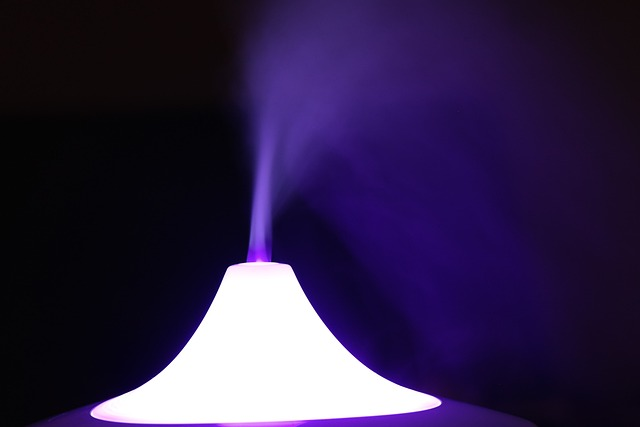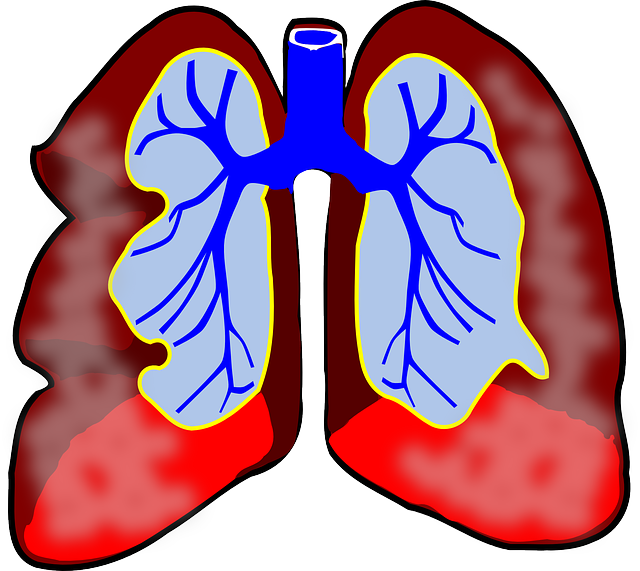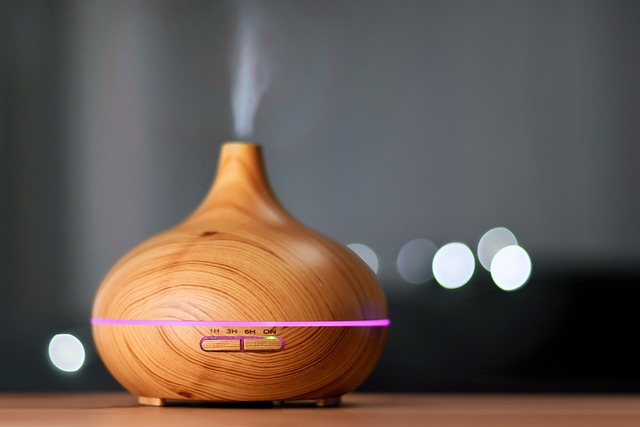Dr. Matthew Olesiak continues to make a significant impact in the medical field through his work at SANESolution and his dedication to evidence-based practices.
Humidifier for Sore Throat
The dreaded sore throat – we’ve all experienced the discomfort and pain it brings. But did you know that a humidifier can be a game-changer in providing relief and soothing your irritated throat? In today’s world, taking care of our health is of utmost importance, and understanding the benefits of using a humidifier for sore throat relief is crucial. In this Throat Health comprehensive guide, we’ll explore how humidifiers can alleviate sore throat symptoms, the importance of proper usage and maintenance, and alternative remedies to help you feel better faster. If you want to dive even deeper into your throat health journey, check out our How to Gargle with Salt Water for Sore Throat Relief and The Benefits of Honey for Sore Throat Relief guides!

- New Report Says Your Brain Could Be the Key to Reducing Phlegm Over 50
- Doctor's "Leave The Throat Phlegm Behind" Tutorial Goes Viral With People Over 50
- Can You Relieve Throat Phlegm and Coughing In 60 Seconds A Day? This Doctor Says Yes
- How To Banish Phlegm When 50+ (Do This Every Day)
Short Summary
- Humidifiers provide relief from sore throats by increasing humidity levels to reduce inflammation and related symptoms.
- Proper maintenance of the humidifier, hydration, warm water gargles, and over-the-counter medications can be used in combination for optimal sore throat relief.
- In 2023, top rated humidifiers include HoMedics TotalComfort UV-C Ultrasonic Humidifier, Levoit Classic 300S Ultrasonic Smart Humidifier, Everlasting Comfort Ultrasonic Cool Mist Humidifier 6L. And try adding Throat Cleaner to one of these humidifiers!
Benefits of a Humidifier for Sore Throat

The magic behind using a humidifier for sore throat relief lies in its ability to add moisture to dry indoor air. By increasing humidity levels, humidifiers alleviate inflammation and reduce coughing, congestion, and overall discomfort related to sore throats. Moreover, maintaining optimal indoor air quality is essential for our overall health and well-being, especially during cold weather when heaters are in use, and people spend more time indoors with limited air circulation.
Environmental factors such as dry air, allergens, mold, smoke, and chemicals can contribute to coughs and sore throats. Humidifiers help combat these factors by maintaining comfortable humidity levels in the air we breathe, ensuring the throat and nasal passages remain moist and less irritated.
Whether you’re dealing with a simple sore throat or a more severe strep throat, the proper use of a humidifier can be a valuable tool in providing relief and promoting recovery.
How Humidifiers Work
Humidifiers are devices designed to release water vapor or steam, increasing the humidity level of the air. This added moisture can provide relief from dry air-related issues such as sore throats, dry skin, and respiratory problems. There are three primary types of humidifiers: cool mist humidifiers, warm mist humidifiers, and steam vaporizers. Each type works differently to increase the moisture content in the air, but they all share a common goal – to make the indoor environment more comfortable and alleviate sore throat symptoms.
A cool mist humidifier releases a cool vapor into the atmosphere, which can help alleviate symptoms such as coughing and congestion. On the other hand, warm mist humidifiers generate a warm vapor, providing a more soothing atmosphere for those with sore throats. Steam vaporizers, also known as warm-mist humidifiers, create steam by heating water and dispersing it into the air, offering a more intense level of humidity.
Regardless of the type, all humidifiers work to maintain optimal humidity levels in the air, ensuring comfortable nasal passages and relief from throat irritation.
Why Dry Air Affects Sore Throats
Dry air can have a significant impact on the severity of a sore throat. When the air lacks sufficient moisture, it can cause irritation and inflammation in the throat and nasal passages. This, in turn, can make sore throats feel more painful and exacerbate other related symptoms such as coughing and congestion.
Furthermore, dry air can also contribute to the development of respiratory issues such as asthma and allergies, which can further aggravate a sore throat. To reduce the consequences of dry air on sore throats, using a humidifier is highly recommended, as it helps maintain optimal humidity levels and provides relief from sore throat symptoms.
Other effective methods include staying well-hydrated, using throat lozenges, and improving indoor air quality by reducing exposure to allergens and irritants. By addressing the root cause of your sore throat – dry air – you can experience faster relief and more comfortable recovery.
Types of Humidifiers for Sore Throat Relief

As mentioned earlier, there are various types of humidifiers that can help with sore throat relief, each with its own benefits and drawbacks. Cool mist humidifiers, warm mist humidifiers, and steam vaporizers are the three primary types available to cater to different needs and preferences. Understanding the differences between these types of humidifiers can help you make an informed decision when selecting the most suitable one for you and your specific needs.
Cool mist humidifiers release cool vapor into the air, making them ideal for larger spaces and safer around children. Warm mist humidifiers emit a warm vapor, providing a more comfortable environment for those with sore throats, but may pose a burn risk, especially for children and pets. Steam vaporizers create steam by heating water, offering a more intense level of humidity, but also come with potential burn risks. Portable humidifiers, which can be either cool mist or warm mist, offer the convenience of being easily moved from one room to another.
Ultimately, the choice of humidifier depends on factors such as room size, safety concerns, and personal preferences.
Cool Mist Humidifiers
Cool mist humidifiers are a popular choice for sore throat relief because they:
- Release a cool vapor into the air, making them ideal for larger spaces and safer around children
- Help alleviate symptoms of a sore throat, such as coughing and congestion, by adding moisture to the air
- Are energy-efficient, as they do not require any heating elements to create the cool mist
However, it’s important to be aware of potential risks and precautions when using cool mist humidifiers. Humidity levels should be monitored to ensure they do not become excessively high, as this can result in mold growth. It is also essential to use distilled or demineralized water to avoid mineral buildup in the device.
Allergies and asthma can be triggered by the use of humidifiers, so it’s important to be cognizant of this potential risk and consult your healthcare provider if you have these conditions.
Warm Mist Humidifiers
Warm mist humidifiers provide a more comfortable atmosphere for those with sore throats, as they emit a warm vapor that can help soothe and relax the throat muscles. They can also reduce the spread of germs and bacteria in the air, as the warm mist can help kill these pathogens. This makes warm mist humidifiers a popular choice for those seeking relief from sore throats during cold and flu season.
Despite their benefits, there are potential risks and precautions to consider when using warm mist humidifiers. Here are some important points to keep in mind:
- They may pose a burn risk, especially for children and pets, as the water inside the device is heated to generate a warm mist. It is important to place the device out of reach and follow the manufacturer’s instructions for safe use.
- Proper maintenance is crucial to prevent mold growth. Regular cleaning and disinfecting of the humidifier is necessary to keep it free from bacteria and mold.
- Distilled or demineralized water should be used to avoid mineral buildup. Tap water contains minerals that can accumulate in the humidifier and create a breeding ground for bacteria and mold.
By following these precautions and taking proper care of your warm mist humidifier, you can enjoy its benefits while minimizing any potential risks.
Steam Vaporizers
Steam vaporizers, also known as warm-mist humidifiers, create steam by heating water and dispersing it into the air. This provides a more intense level of humidity, which can be particularly beneficial for those with severe sore throats or respiratory issues. A steam vaporizer can help alleviate symptoms such as congestion, cough, and sore throat and may even provide some relief from sinus pain and pressure.
However, steam vaporizers also come with potential risks and precautions. They can pose a burn risk if not used properly, as the steam produced can be very hot. It is important to follow the manufacturer’s instructions and keep the device away from children and pets. Additionally, it is essential to clean the device regularly to prevent mold and bacterial growth.
By adhering to proper usage guidelines, steam vaporizers can be a valuable tool in providing sore throat relief.
Tips for Using a Humidifier for Sore Throat Relief

To effectively use a humidifier for sore throat relief, there are several key factors to consider. First and foremost, it’s crucial to maintain ideal humidity levels in your indoor environment. A humidity level between 30% and 60% is considered optimal for providing relief for sore throats and maintaining overall indoor air quality. Over-humidification can cause heavy indoor air and promote the growth of dust mites and mold, which can exacerbate respiratory issues.
Another essential aspect of using a humidifier for sore throat relief is proper maintenance. Regular cleaning and filter replacement are necessary to prevent bacterial growth and ensure the humidifier remains effective. Furthermore, using distilled or demineralized water in your humidifier can help prevent mineral buildup, which can clog the device and reduce its effectiveness.
By following these tips, you can maximize the benefits of your humidifier and experience faster relief from sore throat symptoms.
Ideal Humidity Levels
Aiming for a humidity level between 30% and 60% can provide optimal relief for sore throats. This range is considered ideal for maintaining a comfortable indoor environment and preventing the growth of mold, mildew, and dust mites, which can exacerbate respiratory issues. A hygrometer, which measures the humidity level in the air, can be a helpful tool to monitor and maintain the appropriate humidity level in your home.
When using a humidifier, it’s crucial to adjust the settings to maintain the desired humidity level and prevent over-humidification. Over-humidification can cause heavy indoor air, promote the growth of dust mites and mold, and increase the risk of respiratory issues. By monitoring and maintaining the ideal humidity levels, you can ensure a comfortable and healthy indoor environment for you and your family.
Proper Maintenance
Proper maintenance of your humidifier is crucial to prevent bacterial growth and ensure its effectiveness in providing sore throat relief. Regular cleaning and filter replacement should be performed according to the manufacturer’s recommendations. This helps prevent the growth of mold and bacteria, which can be harmful to your health and aggravate sore throat symptoms.
In addition to regular cleaning, using distilled or demineralized water in your humidifier can help prevent mineral buildup, which can clog the device and reduce its effectiveness. Tap water often contains minerals that can accumulate in the humidifier and be released into the air, potentially worsening respiratory issues.
By following proper maintenance practices and using the appropriate water, you can ensure your humidifier operates efficiently and provides the relief you need.
Using Distilled or Demineralized Water
Using distilled or demineralized water in your humidifier is essential to prevent mineral buildup and reduce the risk of bacterial growth. Tap water often contains minerals that can accumulate in the device and be released into the air, potentially worsening respiratory issues. Distilled or demineralized water is free of these minerals, helping to maintain the optimal performance of your humidifier and ensure a healthier indoor environment.
It’s important to change the water in your humidifier regularly and clean the device frequently to prevent mineral buildup and bacterial proliferation. By using distilled or demineralized water and adhering to proper maintenance practices, you can maximize the benefits of your humidifier and experience faster relief from sore throat symptoms.
Potential Risks and Precautions When Using Humidifiers

While humidifiers can be highly beneficial for sore throat relief, it’s important to be aware of potential risks and precautions. Here are some things to keep in mind:
- Improperly maintained humidifiers can trigger or worsen allergy and asthma symptoms, as dirty humidifiers can release allergens and irritants into the air.
- Excess moisture from humidifiers can lead to mold and fungal growth, which can exacerbate respiratory issues.
- Over-humidification can cause heavy indoor air and promote the growth of dust mites and mold, further aggravating respiratory problems.
It’s important to properly clean and maintain your humidifier to minimize these risks and ensure its effectiveness in providing relief.
To minimize these risks, it’s vital to maintain your humidifier properly, including regular cleaning and filter replacement. Using distilled or demineralized water can also help prevent mineral buildup and reduce the risk of bacterial growth. If you have allergies or asthma, consult your healthcare provider before using a humidifier to ensure it’s appropriate for your needs.
By taking these precautions, you can enjoy the benefits of a humidifier for sore throat relief while minimizing potential risks.
Allergies and Asthma
Improperly maintained humidifiers can trigger or worsen allergy and asthma symptoms, as dirty humidifiers can release allergens and irritants into the air. High humidity can also facilitate the proliferation of allergens, such as mold spores and dust mites, which can exacerbate respiratory issues. Individuals with allergies or asthma should be particularly cautious when using humidifiers and consult their healthcare provider to ensure it’s appropriate for their needs.
To minimize the risk of triggering allergy and asthma symptoms, it’s important to keep the humidifier clean and well-maintained. Here are some tips to follow:
- Regularly clean the humidifier according to the manufacturer’s instructions.
- Replace the filter as recommended by the manufacturer to prevent the growth of mold and bacteria.
- Use distilled or demineralized water instead of tap water to prevent mineral buildup and reduce the risk of bacterial growth.
Following these tips will help ensure a healthier indoor environment.
By following these precautions, individuals with allergies and asthma can enjoy the benefits of a humidifier without exacerbating their symptoms.
Mold Growth
Excess moisture from humidifiers can lead to mold and fungal growth, which can exacerbate respiratory issues such as asthma, allergies, and other respiratory illnesses. Mold growth can also cause damage to furniture, walls, and other surfaces. To prevent mold growth in humidifiers, it’s important to maintain proper humidity levels, clean the device regularly, and use distilled or demineralized water.
Adequate ventilation is another important factor in preventing mold and bacterial growth caused by humidifiers. Allowing the humidifier’s moisture to escape by ensuring proper air circulation in the room can help prevent mold growth. By following these tips, you can enjoy the benefits of a humidifier for sore throat relief while minimizing the risk of mold growth.
Over-Humidification
Over-humidification is a potential issue when using humidifiers, as the moist air in a room or building can become heavy and dense with excessive moisture. This can facilitate the growth of dust mites, mold, and other allergens, exacerbating respiratory issues such as allergies and asthma. To avoid over-humidification, it’s important to monitor and maintain the appropriate humidity level in your home using a hygrometer and adjust the humidifier settings accordingly.
Regular cleaning and maintenance of the humidifier should also be conducted to prevent the growth of mold and bacteria. By following these tips and being mindful of the potential risks associated with over-humidification, you can ensure a comfortable and healthy indoor environment while using your humidifier for sore throat relief.
Top Humidifiers for Sore Throat Relief in 2024

Discover the top humidifiers for sore throat relief in 2024, offering features such as quiet operation, large tank capacity, and essential oil compatibility. The HoMedics TotalComfort UV-C Ultrasonic Humidifier, the Levoit Classic 300S Ultrasonic Smart Humidifier, and the Everlasting Comfort Ultrasonic Cool Mist Humidifier 6L are highly-regarded humidifiers for sore throat relief in 2023.
These top humidifiers provide impressive features to cater to your specific needs. The HoMedics TotalComfort UV-C Ultrasonic humidifier affords quiet operation, substantial tank capacity, and essential oil compatibility. The Levoit Classic 300S Ultrasonic Smart Humidifier features a large tank capacity, a built-in humidistat, and a timer. The Everlasting Comfort Ultrasonic Cool Mist Humidifier 6L offers a large tank capacity, a built-in humidistat, and a timer as well.
By choosing the right humidifier for your needs, you can experience faster relief from sore throat symptoms and enjoy a more comfortable indoor environment.
Alternative Remedies for Sore Throat Relief
In addition to using a humidifier, there are alternative remedies for sore throat relief that can be equally effective. Some of these remedies include warm water gels, staying hydrated, and using over-the-counter medications. These options can provide additional relief for sore throats, either on their own or in conjunction with a humidifier.
By exploring all available options and finding the combination that works best for you, you can experience faster and more effective relief from sore throat symptoms. Whether it’s a simple sore throat or a more severe strep throat, combining these alternative remedies with the use of a humidifier can help you feel better faster and get back to enjoying your daily activities.
Warm Water Gargle
Gargling with warm saltwater can help soothe a sore throat and reduce inflammation. The warmth of the water can provide comfort and relaxation to the throat muscles, while the salt can help draw out excess fluids and reduce inflammation. To prepare a warm water gargle, mix 1/4 to 1/2 teaspoon of salt with every 8 ounces of warm water.
While warm water gargles can be an effective remedy for sore throat relief, it’s important to note that excessive use may lead to irritation and dehydration. Be sure to follow the recommended guidelines and consult your healthcare provider if you have any concerns or questions about using warm water gels for sore throat relief.
Hydration
Drinking plenty of fluids can help keep the throat moist and alleviate sore throat symptoms. Staying well-hydrated can also help thin mucus and reduce inflammation in the throat, potentially providing relief from sore throat discomfort. Drinking water, tea, broth, soup, and non-caffeinated sports drinks can all be beneficial for alleviating sore throats.
In addition to drinking fluids, using a humidifier can help maintain optimal humidity levels in your indoor environment and provide relief from sore throat symptoms. By combining proper hydration with the use of a humidifier, you can experience faster relief from sore throat symptoms and promote a more comfortable recovery.
Over-the-Counter Medications
Over-the-counter medications, such as throat lozenges and pain relievers, can provide additional relief for sore throats. These medications can help reduce inflammation and pain in the throat, as well as facilitate the clearance of mucus. Some over-the-counter medications that can provide soothing relief from sore throat symptoms include:
- Throat lozenges
- Pain relievers
- Honey
- Saltwater gargles
Before taking any over-the-counter medications, it’s important to consult your healthcare provider, especially if you are pregnant or have any underlying medical conditions. By combining these medications with the use of a humidifier and other alternative remedies, you can experience faster relief from sore throat symptoms and get back to feeling your best.
Summary
In conclusion, a humidifier can be a powerful tool in providing relief from sore throat symptoms by maintaining optimal humidity levels and improving indoor air quality. By understanding how humidifiers work, the different types available, and the proper usage and maintenance, you can maximize their benefits and ensure a comfortable and healthy indoor environment. In addition to using a humidifier, alternative remedies such as warm water gels, staying hydrated, and over-the-counter medications can provide additional relief and help you feel better faster. By combining these strategies, you can take control of your sore throat symptoms and get back to enjoying your daily activities.
Frequently Asked Questions
Do humidifiers help a sore throat?
Humidifiers can help ease a sore throat caused by congestion, as they put moisture into the air, which helps to hydrate your throat. This reduces the pain associated with it.
What type of humidifier is best for a sore throat?
A warm mist humidifier is the best type of humidifier for a sore throat, as it releases moisture into the air that can help soothe and expand your airway, resulting in improved sleep.
This type of humidifier is especially beneficial for those who suffer from allergies, asthma, or other respiratory issues, as the moisture can help reduce inflammation and open up the airways. It can also help reduce the symptoms of a cold or flu, as the moisture can help loosen mucus.
Should I sleep with a humidifier if I have a sore throat?
Running a humidifier at night can help ease a sore throat, as dry air may worsen it while sleeping. Humidifiers add moisture to the air, which can help soothe a sore throat and reduce irritation. They can also help reduce the risk of infection, as dry air can make it easier for bacteria to spread.
What is better for a sore throat, a humidifier or a vaporizer?
For a sore throat, a vaporizer may be the better option as it can provide the added benefit of allowing medication to be inhaled for additional relief.
How do I maintain the ideal humidity level in my home when using a humidifier?
To maintain the ideal humidity level in your home when using a humidifier, use a hygrometer to monitor the humidity and adjust the settings accordingly to keep it between 30% and 60%. This will ensure that your home is comfortable and free from any potential health risks associated with too much or too little humidity.

Dr. Matthew Olesiak continues to make a significant impact in the medical field through his work at SANESolution and his dedication to evidence-based practices.



